Everything you need to know about the clean energy transition if you’re not sure you know anything
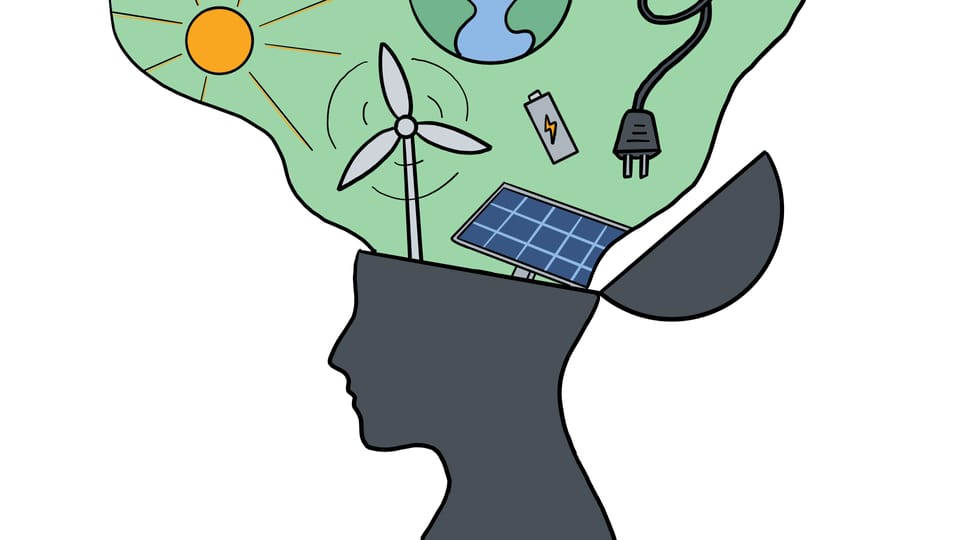
The clean energy transition from burning fossil fuels to powering everything imaginable with 100% clean energy is already underway: renewable energy producers like wind turbines and solar panels have simply gotten too cheap and efficient for gas, coal, and oil to compete. But how long the transition takes is still very much unknown—and not just because Big Dystopia is doing everything they can to slow it down.
To make sense of what's happening right now in the exciting but complicated world of clean energy, you're gonna need some context.
The Plan: Electrify Everything
1. Generating electricity from wind turbines and solar panels has gotten comically cheap
Perhaps you’ve heard the cost of renewable energy is going down. But did you know it’s gotten 95% cheaper over the last 15 years? 95%! Renewable energy is now cheaper on a per-kilowatt basis than burning fossil fuels, full stop. And it continues to get cheaper and more efficient all the time, with no signs of slowing down. (This exponential improvement is explained by a concept called 'learning curves', which just means that we get better at making tech components in factories over time. Learning curves apply to other clean energy technology, too, like batteries, green hydrogen, and advanced geothermal engineering.)
2. Clearly, we need to electrify everything
The fastest, cheapest, and easiest way for us to stop burning fossil fuels is to electrify everything on the planet that requires power but isn’t already electrified. This includes our gas-powered home furnaces, water heaters, ovens, and cars. It includes industrial processing and shipping. It includes making concrete and chemicals. We can electrify it all, and power everything with electricity generated by renewables.
Why is electricity better? Because electricity in and of itself does not produce any greenhouse gasses (GHG). It’s “clean”, in climate-speak. Electricity is only “dirty” when it’s generated by burning fossil fuels.
3. So where does our electricity come from today?
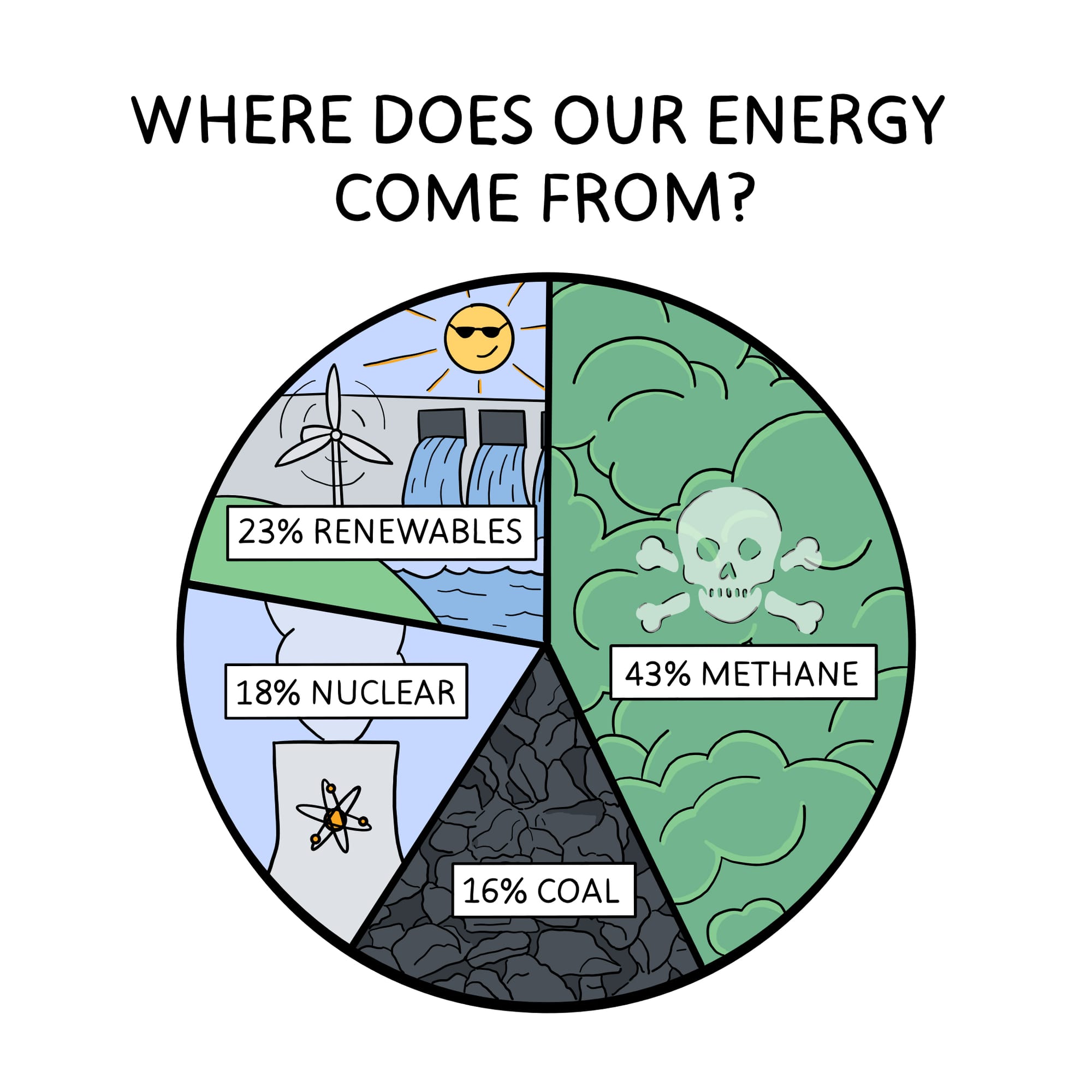
Of course, we already use plenty of electricity today, but the majority—60% in the U.S.—is still generated by burning fossil fuels like gas, coal, and oil.
Here’s how electricity is generated in America (data from 2023):
43% of our electricity comes from “natural” gas power plants
So-called “natural” gas is actually quite nasty. It’s over 90% pure methane, and methane is much worse in the short-term for global warming than carbon dioxide (CO2). Methane gas is, in fact, about 80 times worse than CO2 over a 20-year timeframe (after 20 years in the atmosphere, methane breaks down into CO2 and water—but the next 20 years are crucial!).
America switched from burning coal to burning methane because we were running out of easily extractable coal and we discovered a new way to harvest methane called fracking. To justify the switch, Big Dystopia told everyone that methane is better for the environment than coal. But if we factor in the total emissions—and the fact that methane is constantly leaking everywhere—we find that methane is actually worse for our climate than burning coal.
Not only is methane terrible for the climate, it’s bad for our health. Having a gas oven in the home has been shown to increase the odds of a child getting asthma by 42%. Meanwhile, an increasingly large body of evidence has linked methane with the onset of adult dementia. Yikes!
16% of electricity production still comes from good old fashioned coal
Burning coal releases CO2 into the atmosphere, along with other pollutants that are bad for our lungs—particularly in the communities where it's mined and burned. Coal is also what creates smog, and it makes our rain and oceans more acidic.
Nuclear power provides 18.6% of our electricity
Nuclear is an interesting one. I’ll get more into it in a future post, but even though some people still consider nuclear power plants a source of clean energy, they're a less-attractive option for powering our infinite energy future—simply because it takes far too much time and money to build new nuclear, and it hasn’t gotten any cheaper (unlike the other renewable technologies), so the energy output vs. cost equation simply isn’t worth it. In the time it takes to build a new nuclear power plant, we could add 3x the amount of solar production for a fraction of the cost.
The good news is, the rest of our electricity today is already being generated by renewables.
Wind turbines account for 10%; water (hydropower) for 5.7%, solar panels for 3.9%. Earth heat (aka geothermal) is just .4%, but it’s about to start growing fast
So, the general idea is to shut down all of our coal and methane gas plants (and stop building even more of them, which we are still doing) and transition to generating electricity with 100% renewables.
Sounds pretty simple, no? Well, yes, except…
The First Problem: Our Grid Is Fucked
4. Our energy grid is totally fucked
Our energy grid—often referred to as just 'the grid'—is a vast constellation of high-voltage transmission lines, voltage transformers, lower-voltage distribution lines, and other stuff that brings electricity from wherever it’s generated to wherever it's needed.
How it does that is not super important right now. But there's a few things you should know:
5. The grid has a limited capacity
Every power line has a maximum amount of electricity it can carry at a given time (the technical term for that capacity is “load”, lol). The common analogy is to a garden hose: it takes a long time to fill a swimming pool with a garden hose, because it can only move so much water at once. So we can’t just keep adding more electricity supply (more 'water') without increasing the available load (making the hose bigger or building more hoses) or the whole system will break.
In fact, the grid’s lack of capacity is already an issue: think of the blackouts in Texas, caused by everybody running their A/C at the same time.
(Quick aside: heating and cooling buildings uses a ton of energy; it accounts for a whopping 26% of carbon emissions worldwide.)
When the grid gets overloaded, safety mechanisms shut our power off so shit doesn’t explode. It's exactly the same as how a circuit breaker flips in my apartment if we run the toaster and the hairdryer at the same time.
So, if the grid’s capacity is already a big issue, imagine what’s gonna happen when AI companies start building ginormous, power-sucking data centers, and everyone’s driving an electric vehicle that needs to get charged at night, and we’re all running the A/C because it's hotter and hotter every year.
We’re looking at a lot more blackouts, as well as huge spikes in our electric bills.
Of course, this wouldn’t be such an issue if we could just store some of the electricity we generate for when we really need it. Then we’d have backup power whenever the grid got swamped. But unfortunately…
6. The grid cannot store electricity
Yeah. The grid has no inherent ability to store electricity. Perhaps that’s counterintuitive: when you flip a light switch, the light comes on instantly as electricity flows into the lightbulb. So isn’t that electricity coming from, like, some big pool of electricity somewhere? The answer, shockingly (pun), is no: all the electricity we use gets produced the moment we demand it, in real-time, delivered to us via the grid at the speed of light.
'Well,' I'm imagining you saying, 'if the grid can’t store electricity, I guess we better build a shit-ton of renewables so that we’ll always have enough power!'
Indeed, we should! There's just a few problems. The first is that doing anything related to infrastructure in this country takes absolutely fucking forever, and that includes plugging new wind and solar projects into the grid.
7. The queue to get connected to the grid is years long
New energy project proposals can wait up to seven years(!) to get approved for an interconnection to the grid. As of 2023, there are over 2 terawatts of new energy projects —the equivalent of ~2,000 nuclear reactors—idly waiting for a grid 'interconnection' approval. Almost all those proposals are for solar and wind farms.
Another way to put that terawatt number into perspective: there are only 1.25 terawatts of energy total on the grid today. So, yes, there are more proposed energy projects waiting for an interconnection than there are currently in operation.
Who approves these interconnections, and what’s the hold up?
That’s a subject for yet another post—have you subscribed to Green Juice yet?—but suffice it to say, we need to make it much easier to get clean energy projects approved.
The second problem is kind of obvious, if you think about it.
The Second Problem: It's Not Always Sunny and Windy
8. Wind and solar production is variable
Annoyingly, solar panels only work when the sun is shining and wind turbines only spin when the wind's a-blowin'. Therefore, even if we built a shit-ton of wind and solar farms and they all got approved for grid interconnections, we still wouldn’t be able to meet our electricity demand.
'Cause guess what else is highly variable?
9. The grid is also highly variable
People use different amounts of electricity depending on the season and the time of day. A Texas summer evening at 7pm, when everybody gets home from work and starts watching TV and cooking and running their A/C at the same time, is an extreme example of intense electricity demand, or what’s known as a 'peak'.
But electricity demand rises and falls throughout the day, every day. Generally speaking, we use a little when we’re sleeping, more when we wake up, less again during the middle of the day, and the most in the evenings.
Did you know that utility companies charge us different rates for electricity at different times of day, depending on the demand? There’s actually something called Electric Power Markets, which are kind of like the stock market: the price of electricity fluctuates depending on how much of it people are using at any given time. The cost during 'peak' hours—typically 6 to 9pm—can be way higher than at other times of day. Hundreds of times higher, in fact.
How do we deal with demand during these peak hours today?
10. We meet peak demand today by firing up special gas power plants
Whenever the grid is begging for relief, the utility companies fire up special 'natural' gas power plants, dubbed 'peaker' plants, to burn extra poisonous methane gas during those high-demand hours. This ensures we can all watch The White Lotus at the same time on Sunday night. Naturally, the utilities pass the additional costs associated with firing up those peaker plants onto us, the utility ratepayers.
Perhaps you see the conundrum: the times of day that solar produces the most energy—aka 'daytime'—does not line up with our nightly electricity demand. There's actually a name for this phenomenon: the Duck Curve. So-called, because when you compare our total energy demand with and without the addition of solar power, the two lines sort of look like, well, a duck. Solar supplies most of the power we need during the day, but it needs to be offset somehow after dark.
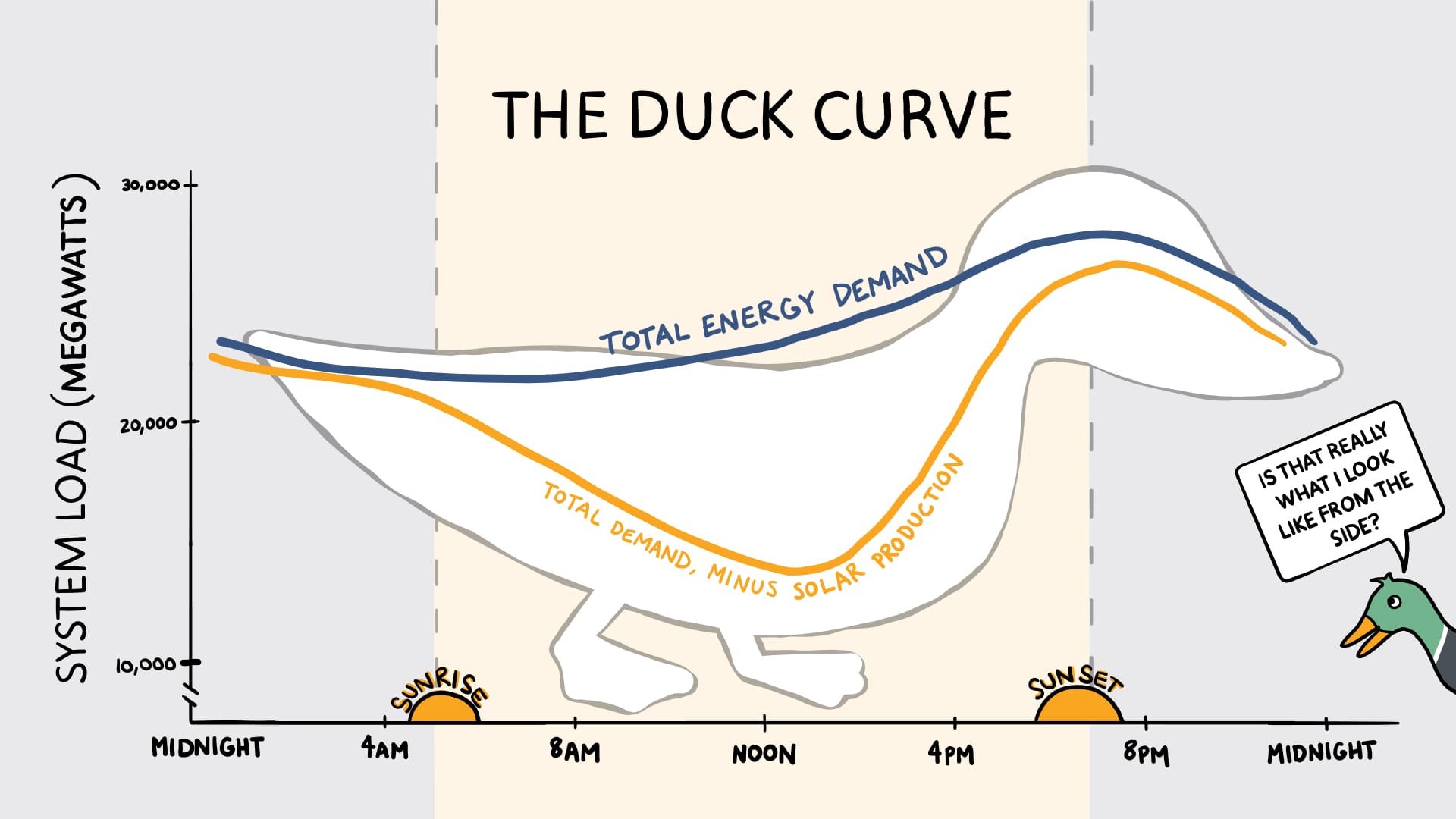
'Okay, enough already!' Now I'm picturing you yelling at me. 'So what do we do? Can we build a bunch of giant batteries? Are there other ways to store energy? What about less variable ways to produce clean energy? Can we build more grid infrastructure, and improve the existing grid so it works better? And, hey, don’t electric vehicles have giant batteries in them? Can we send energy from our EVs and home batteries back into the grid to help meet peak demand? Can I personally do anything to stop paying out the ass for peak-rate electricity?'
Yes, yes, yes, yes, yes, and yes!
There are thousands of proposed solutions to these specific, thorny problems. I’ll sketch out a few of the most commonly proposed solutions.
The Solutions: An Incomplete List
A: Expand, enhance, and reconductor
We can do things to improve our existing grid infrastructure. We can make it bigger by building more power lines, transformers, and substations. That’s expensive, however, and utility companies are notoriously slow-moving (partly because they don't make as much money off of clean energy, so they slow-walk these projects). An alternative to building is to 'enhance' the grid we’ve already got by making it smarter and more controllable. Right now, we have no idea know how much power is being used on any individual power line, and we can’t redirect the flow of power very easily from low-demand areas to high-demand areas. A third option is to replace the existing power lines with technologically superior lines that can carry more load; this is called “reconductoring”. Remember the garden hose analogy: we can replace the old hose in the backyard with brand new ones that are thicker and more powerful. Without having to expand the grid, we can get something like 30% more capacity just by improving the grid we’ve got.
B: Build utility-scale batteries
The Energizer Bunny would lose his furry little mind if he could see the batteries we’re making today. Scientists and engineers have figured out all kinds of ways to make batteries more energy dense—meaning we can make smaller batteries that store more energy—as well as much, much cheaper to produce. And, just like other 'learning curve' renewables, these improvements are compounding: batteries get 5-8% more dense every year, which means they double in density every ~10 years.
We could build utility-scale battery parks to store the extra electricity created by solar and wind during the day (renewables often generate more power than we can use), and then tap into it when there’s high demand on the grid at night.
C: Build a huge network of DERs
DERs stands for Distributed Energy Resources. I’ll explain. On the one hand, we’ve got centralized, utility company-owned means of power production like gas and nuclear plants, large-scale renewable projects, etc. But on the other hand, we’ve got an increasingly large number of normal folks with their own small means of energy production and storage in the form of solar rooftop panels, electric vehicles, and lithium-ion home batteries.
All those rooftop solar panels and home batteries collectively generate and store a surprisingly huge amount of power, and the technology exists to send that power into the grid in order to help out during peak demand times. You don't need to wait in a grid interconnection queue: your house is already interconnected! Folks can actually get paid to do this, though the utilities are fighting to pay us as little as possible for our energy contributions.
Imagine a world where there’s tons of rooftop solar—not just on homes, but on schools and warehouses and malls and community centers—all of it serving to balance the overall grid and keep our local communities energy resilient.
There’s massive potential in leveraging DERs. One popular idea is to 'aggregate' or combine a large swath of individual DERs into what's being called a Virtual Power Plant (VPP). Imagine if everyone in Chicago with rooftop solar signed up for a service that allowed a VPP company to leverage all their solar panels at once. The company could divert very small amounts of power from a bunch of homes during key times to areas of need, so the grid doesn't crap out—and they'd pay the suppliers for their borrowed energy.
D: Build more 'clean firm' energy
'Clean firm' in green energy parlance refers to sources of renewable energy that are not variable. Sun and wind, recall, are variable because they do not produce energy around the clock. But geothermal and hydro do. Here's a brief explanation of how those work.
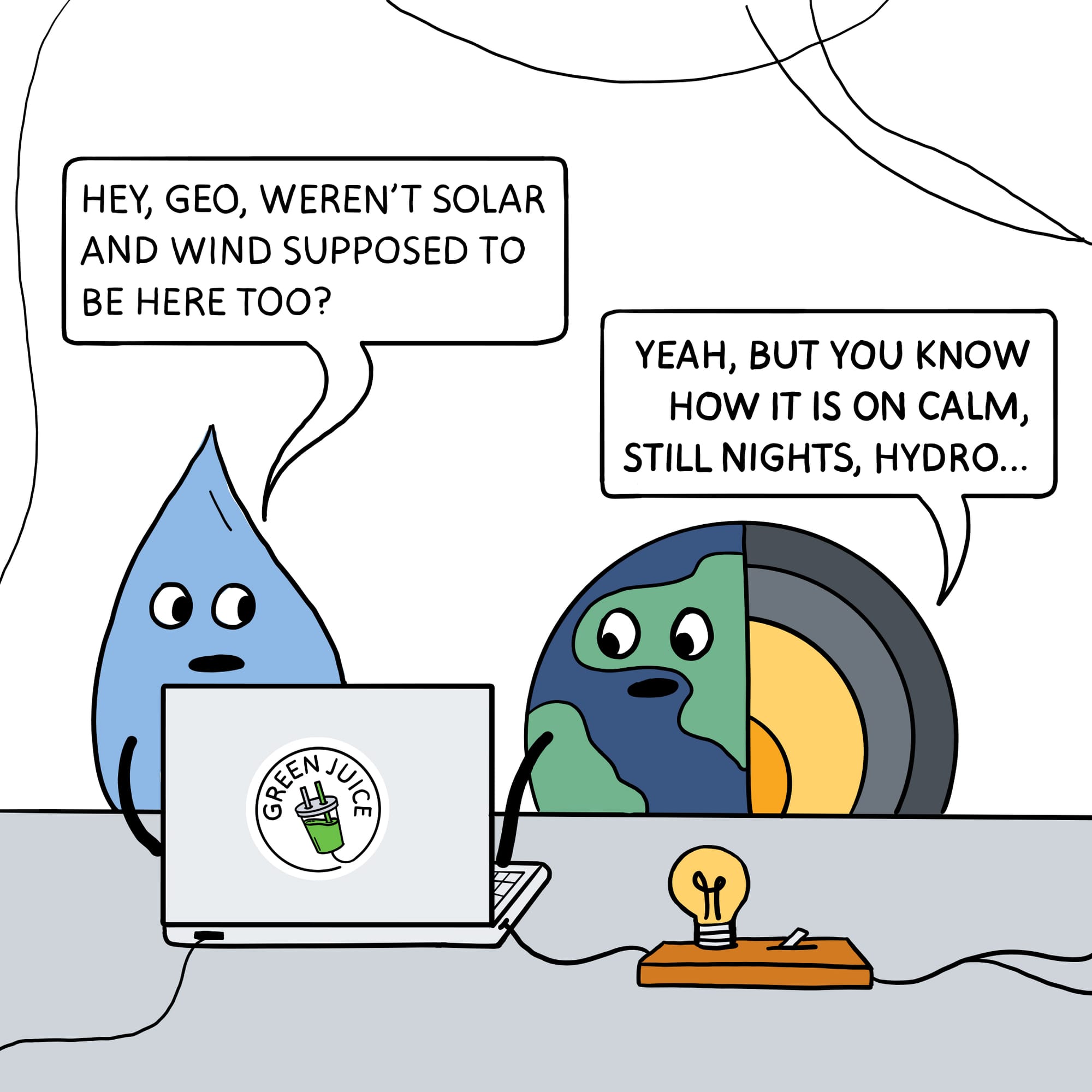
Geothermal: Fun fact! The earth’s molten inner core is roughly the same temperature as the surface of the sun. This heat radiates outwards, towards the surface—so much so that we only have to dig a couple thousand feet down into the mantle for things to start heating up. This naturally occurring heat is constant. Geothermal taps into it by capturing the heat energy in the form of steam. Steam has the power to spin the electromagnetic turbines that generate electricity.
(FYI, the above paragraph is a pretty oversimplified explanation of geothermal. I’ll be doing a deeper dive in, you guessed it, a later post.)
Hydro: Dams create electricity by using the force of rushing water to spin turbines. Since rivers are (generally) always flowing, it’s considered a source of clean firm energy. Man-made hydro is a very promising new technology that can both generate and store energy. Speaking of which…
E: Build non-battery storage
There are a number of good ways to store energy besides batteries. One is man-made, closed-loop hydro: in a nutshell, the idea is to build a huge swimming pool at the top of a hill and fill it with water, and to build an empty pool at the bottom of the hill. Then, during peak-demand hours, you can send the water from the top of the hill to the bottom through a tube. Inside the tube is a generator, the same as what you'd use in a dam, so the water generates power. Then, the next morning, when clean energy is cheap again, you use cheapo electricity to pump the water back up to the top pool. Rinse and repeat every day for approximately 100 years.
There’s also thermal storage, i.e. energy stored as heat. Several startups are working on what climate folks refer to as the 'bricks in a box' model of thermal storage. Literally, heating up a bunch of bricks stacked in a very well-insulated box using a toaster-like heating mechanism. Depending on the material they’re made of, these bricks can get insanely hot and retain their heat for a long time. A similar principle to hydro applies here: you can heat the bricks up when clean energy is cheap, then convert it back to electricity (or turn it into steam, or just use the pure heat) when you need it.
Geothermal, too, allows for a form of energy storage. You can cap the well where the steam comes out of the ground and then release the built-up steam as needed.
F: Repurpose retired coal plants
The big advantage to building solar and wind farms on the site of retired coal plants is that those plants already have an interconnection to the grid, so you can skip the queue.
—
Phew. That was a lot! But it’s important to provide context for these big structural problems we’re facing. The task ahead of us is clear: we need to build more clean energy production and storage, expand and improve our energy grid, and make big changes to how our utility companies operate.
Wanna help make it happen? Read about how you can Get Involved.
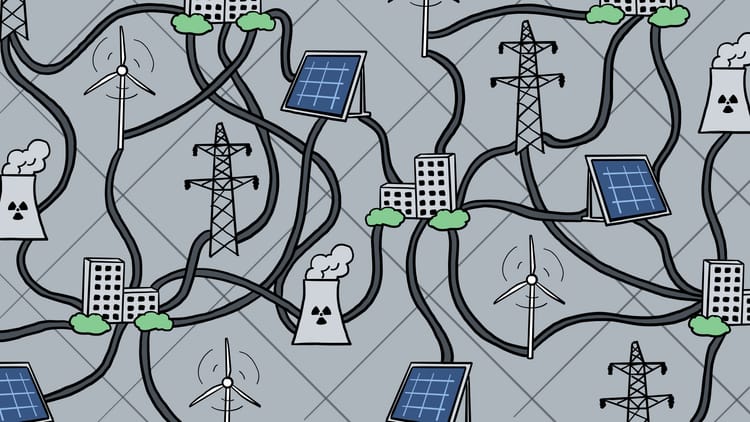
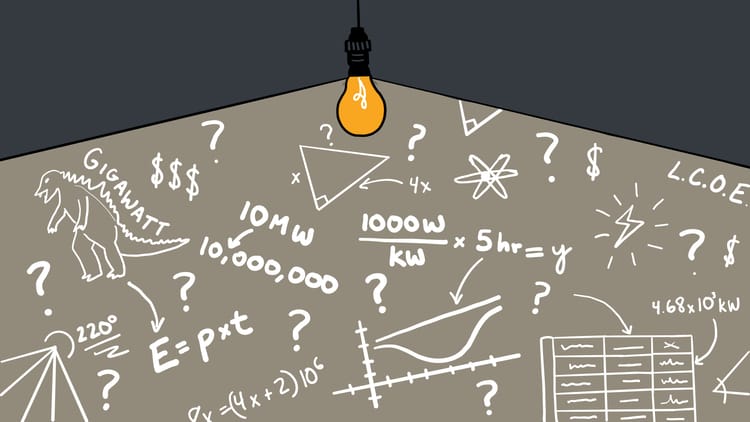
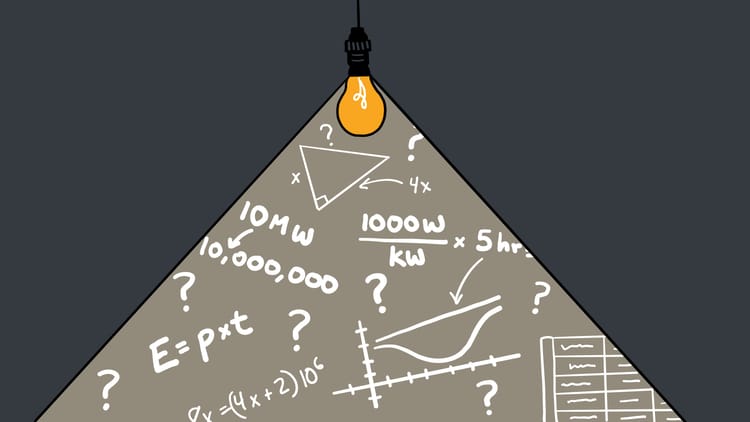
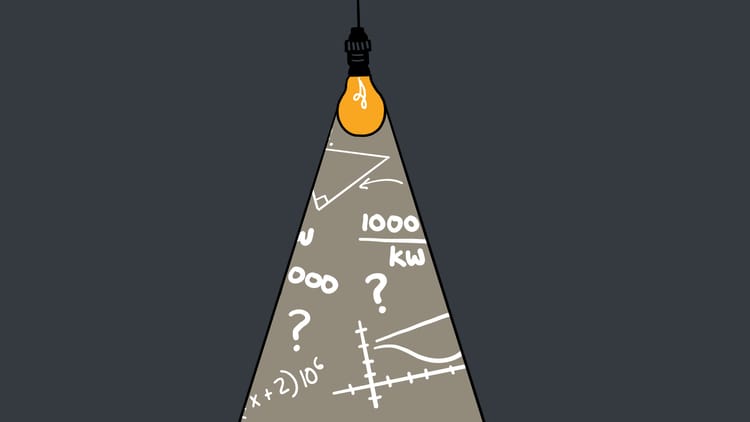

Member discussion